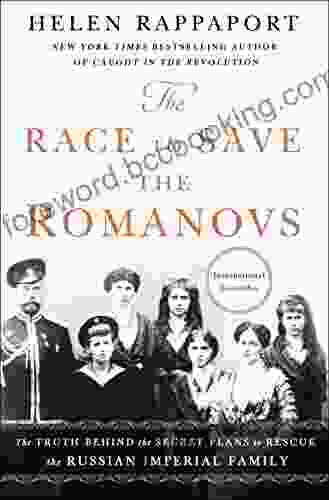Evolving Theories, Ideologies, and Processes of Visual Communication

Visual communication is a dynamic and ever-evolving field that has a profound impact on our understanding of the world around us. From the cave paintings of our ancestors to the digital images that bombard us today, visual communication has been a central part of human culture.
4.4 out of 5
| Language | : | English |
| File size | : | 6036 KB |
| Text-to-Speech | : | Enabled |
| Screen Reader | : | Supported |
| Enhanced typesetting | : | Enabled |
| Print length | : | 457 pages |
| Lending | : | Enabled |
In recent years, the field of visual communication has undergone a period of rapid transformation. New technologies have emerged that have changed the way we create, distribute, and consume visual content. At the same time, the rise of social media and the internet has created new opportunities for people to share and connect with each other through visual communication.
These changes have led to a renewed interest in the theoretical and ideological foundations of visual communication. Scholars are now re-examining the ways in which visual communication shapes our understanding of the world, and how it can be used to promote social change.
Theories of Visual Communication
There are a number of different theories that have been developed to explain the nature and function of visual communication. Some of the most influential theories include:
* Semiotics: Semiotics is the study of signs and symbols. Semioticians argue that visual communication is a form of language that uses images and symbols to represent ideas and concepts. * Gestalt psychology: Gestalt psychology is a school of psychology that focuses on the way that the human brain organizes and interprets visual information. Gestalt psychologists argue that we tend to perceive visual objects as wholes, rather than as individual parts. * Cognitive psychology: Cognitive psychology is a school of psychology that focuses on the way that the human mind processes information. Cognitive psychologists argue that visual communication is a cognitive process that involves attention, perception, memory, and reasoning. * Social constructivism: Social constructivism is a theory that argues that our understanding of the world is constructed through our interactions with others. Social constructivists argue that visual communication is a social process that shapes our perceptions of reality.
These are just a few of the many theories that have been developed to explain visual communication. Each theory offers a unique perspective on the nature and function of visual communication, and can help us to better understand the role that visual communication plays in our lives.
Ideologies of Visual Communication
In addition to theories, there are also a number of different ideologies that have been developed to guide the use of visual communication. Some of the most common ideologies include:
* Realism: Realism is an ideology that argues that visual communication should accurately represent the world as it is. Realists believe that visual communication should be used to document reality, rather than to create illusions or promote particular agendas. * Modernism: Modernism is an ideology that argues that visual communication should be used to challenge and subvert traditional conventions. Modernists believe that visual communication should be used to create new and innovative forms of expression, rather than to simply reproduce the past. * Postmodernism: Postmodernism is an ideology that argues that there is no single, objective truth that can be represented through visual communication. Postmodernists believe that visual communication is a subjective and fluid process that is constantly being reinterpreted and reconstructed.
These are just a few of the many ideologies that have been developed to guide the use of visual communication. Each ideology offers a unique perspective on the role and purpose of visual communication, and can help us to better understand the ways in which visual communication can be used to shape the world around us.
Processes of Visual Communication
The processes of visual communication are the steps involved in creating, distributing, and consuming visual content. These processes have evolved significantly over time, thanks to the development of new technologies.
Some of the most important processes involved in visual communication include:
* Image production: Image production is the process of creating visual content. This can involve a variety of techniques, such as photography, videography, and graphic design. * Distribution: Distribution is the process of making visual content available to audiences. This can be done through a variety of channels, such as print, broadcast, and digital media. * Consumption: Consumption is the process of receiving and interpreting visual content. This can involve a variety of activities, such as watching a movie, reading a magazine, or scrolling through a website.
The processes of visual communication are constantly evolving, thanks to the development of new technologies. These changes are creating new possibilities for visual communication, and are making it possible to reach wider audiences than ever before.
Visual communication is a dynamic and ever-evolving field that has a profound impact on our understanding of the world around us. The theories, ideologies, and processes of visual communication are constantly being re-examined and reinterpreted, and new technologies are emerging that are changing the way we create, distribute, and consume visual content.
This book provides a comprehensive overview of the current state of visual communication, and explores the ways in which it is likely to evolve in the future. This book is an essential resource for anyone who wants to understand the role and purpose of visual communication in the 21st century.
4.4 out of 5
| Language | : | English |
| File size | : | 6036 KB |
| Text-to-Speech | : | Enabled |
| Screen Reader | : | Supported |
| Enhanced typesetting | : | Enabled |
| Print length | : | 457 pages |
| Lending | : | Enabled |
Do you want to contribute by writing guest posts on this blog?
Please contact us and send us a resume of previous articles that you have written.
 Book
Book Novel
Novel Page
Page Chapter
Chapter Text
Text Story
Story Genre
Genre Reader
Reader Library
Library Paperback
Paperback E-book
E-book Magazine
Magazine Newspaper
Newspaper Paragraph
Paragraph Sentence
Sentence Bookmark
Bookmark Shelf
Shelf Glossary
Glossary Bibliography
Bibliography Foreword
Foreword Preface
Preface Synopsis
Synopsis Annotation
Annotation Footnote
Footnote Manuscript
Manuscript Scroll
Scroll Codex
Codex Tome
Tome Bestseller
Bestseller Classics
Classics Library card
Library card Narrative
Narrative Biography
Biography Autobiography
Autobiography Memoir
Memoir Reference
Reference Encyclopedia
Encyclopedia Karen Jeanne Radley
Karen Jeanne Radley Holly Ice
Holly Ice Linda Kay Klein
Linda Kay Klein William M Baum
William M Baum Holly Herrick
Holly Herrick Hill Gates
Hill Gates Roy Benaroch Md
Roy Benaroch Md J F Fox
J F Fox Nathan D Lang Raad
Nathan D Lang Raad Henry Adams
Henry Adams Hayden Crabtree
Hayden Crabtree Helen Birch
Helen Birch Hiroshi Tasogawa
Hiroshi Tasogawa Mary Demichele
Mary Demichele Herb Bryce
Herb Bryce Harry Feeney
Harry Feeney John Corcoran
John Corcoran Hiro Mashima
Hiro Mashima Hesba Stretton
Hesba Stretton Sheri Koones
Sheri Koones
Light bulbAdvertise smarter! Our strategic ad space ensures maximum exposure. Reserve your spot today!

 George OrwellUnleash the Joy of Science: A Journey into the Wonders of the Universe with...
George OrwellUnleash the Joy of Science: A Journey into the Wonders of the Universe with... Bruce SnyderFollow ·3.1k
Bruce SnyderFollow ·3.1k Dennis HayesFollow ·4.7k
Dennis HayesFollow ·4.7k Cormac McCarthyFollow ·6.7k
Cormac McCarthyFollow ·6.7k Chadwick PowellFollow ·16.6k
Chadwick PowellFollow ·16.6k Carson BlairFollow ·10.9k
Carson BlairFollow ·10.9k Salman RushdieFollow ·8.5k
Salman RushdieFollow ·8.5k James GrayFollow ·2.4k
James GrayFollow ·2.4k Franklin BellFollow ·18.8k
Franklin BellFollow ·18.8k

 Fabian Mitchell
Fabian MitchellUnleash the Adventure: Family Fun in the Black Hills
Nestled amidst the rolling hills...

 Alfred Ross
Alfred RossUnleashing Peak Business Performance: A Journey of...
In today's rapidly evolving business...

 Fernando Bell
Fernando BellEmbrace the Prophetic Voice of Howard Zinn: A Journey...
As we navigate the complexities of our...

 Jonathan Franzen
Jonathan FranzenChildren of the Arctic: A Literary Expedition to the...
In the annals of...

 Branson Carter
Branson CarterYou Can Be Neutral on a Moving Train: A Transformative...
Welcome, dear reader,...
4.4 out of 5
| Language | : | English |
| File size | : | 6036 KB |
| Text-to-Speech | : | Enabled |
| Screen Reader | : | Supported |
| Enhanced typesetting | : | Enabled |
| Print length | : | 457 pages |
| Lending | : | Enabled |












